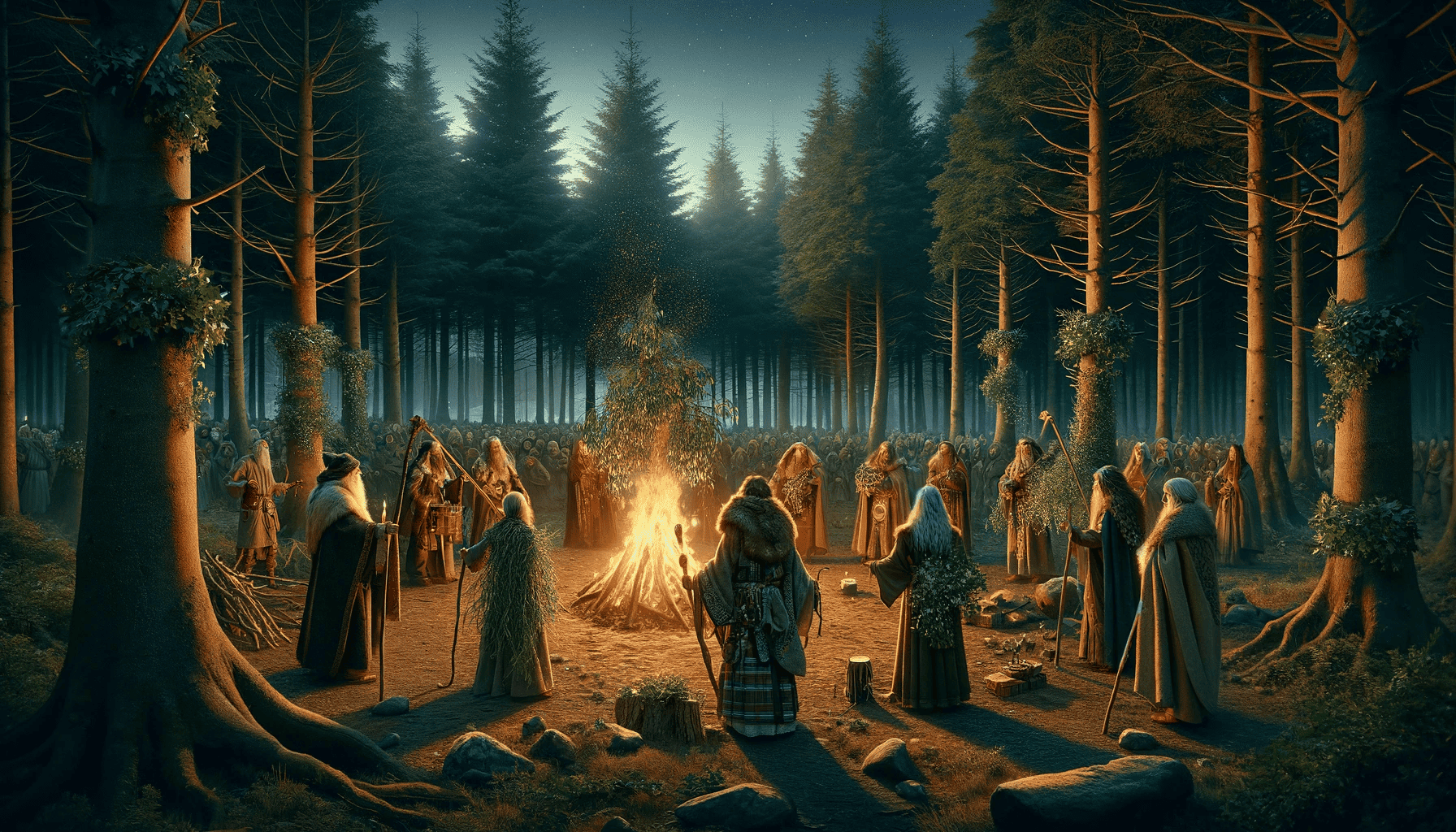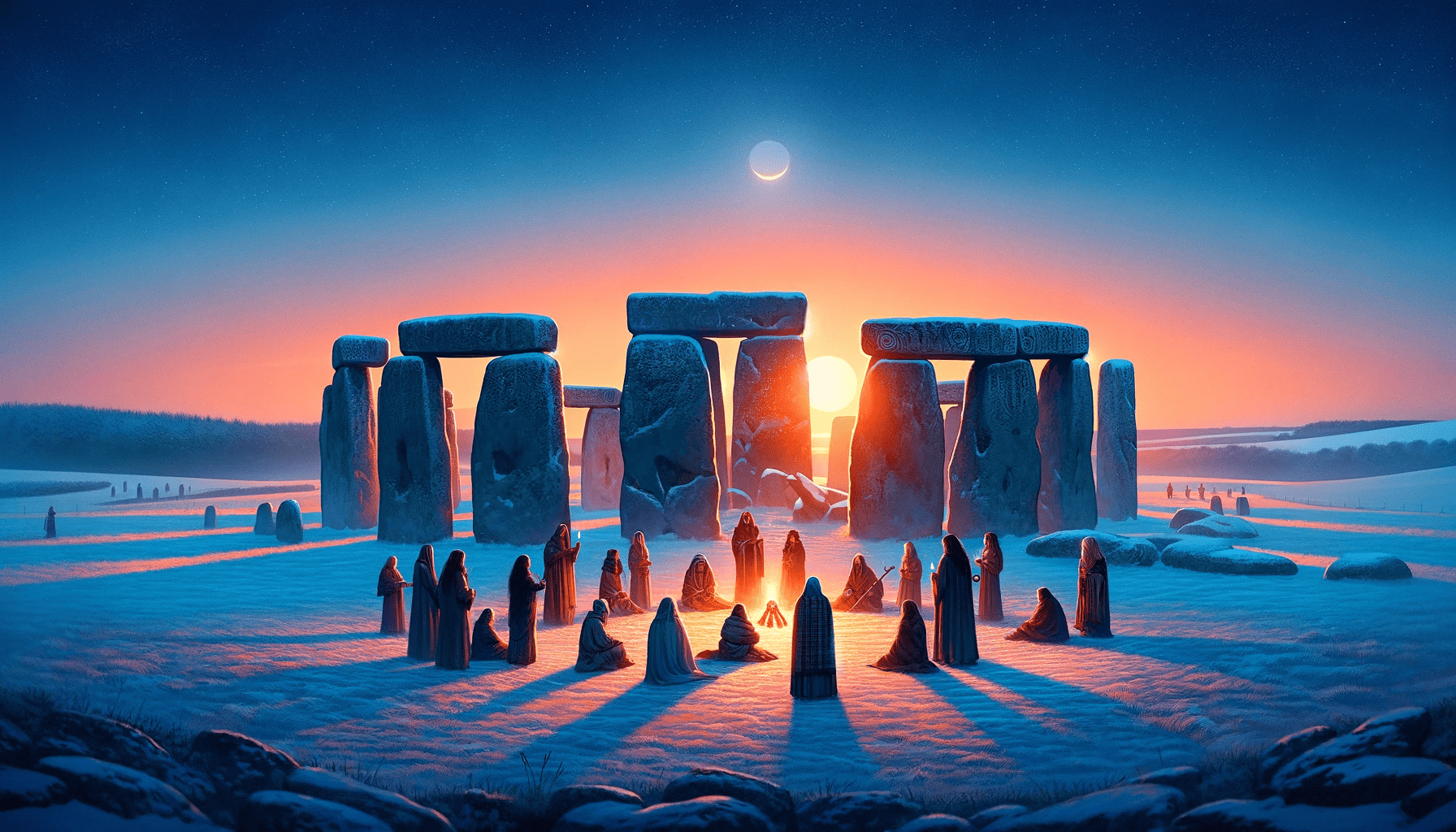
Christmas is widely regarded as a Christian holiday. But that’s not entirely true. Much of what we now associate with Christmas can be traced back to ancient traditions, including traditions of the Druids, who celebrated the Winter Solstice long before Christmas existed.
The Origins of Druidic Traditions
The Druids, who served as priests, teachers, and judges in Celtic societies across Britain, Ireland, Scotland, and Western Europe, were deeply attuned to nature’s cycles. Their practices influenced several Christmas traditions we recognize today.
The beliefs of the druids date back to 3000 BC, although they reached peak influence from the 4th century BC to the 2nd century AD. In the latter part of that period, Christianity was on the rise.
Christians wanted as many people as possible to join their religion, but people didn’t want to give up on their own deities. So instead, early Christians just incorporated existing mythology into their own beliefs. Christians didn’t just do this with the Druids — they did it with Roman traditions, Greek myth, and pretty much every other culture they interacted with. Thus, Christmas emerged as a sort of mixed holiday, taking on a Christmas face but having numerous underlying traditions beneath it.
The Importance of the Winter Solstice
A central aspect of Druidic tradition was the celebration of the Winter Solstice. This was the shortest day of the year, typically falling around December 21st. This event, known as ‘Alban Arthan’ in the Druidic tradition, was a time of great significance. It marked the rebirth of the sun, promising longer days and the return of warmth and light after the darkest period of the year. This notion of light’s triumph over darkness has echoes in the Christmas celebration, where light — in the form of candles and decorative lights — plays a crucial role.
The druids built monuments, and there’s even a theory that Stonehenge was built by druids to celebrate the winter solstice. But monuments and a celebration festival are just a small part of how the Druids celebrated the winter solstice.

The Sacredness of Evergreens
For the ancient Celts and Druids, the harshness of winter was a critical period in the yearly cycle. The survival of evergreen plants like holly, ivy, and mistletoe during these months made them symbols of endurance and the eternal cycle of life. These plants were believed to possess magical properties and were used in rituals and ceremonies to protect against evil, promote fertility, and ensure the return of spring.
- Mistletoe:
- The Druids considered mistletoe a sacred plant, often found growing on oak trees — themselves symbols of strength and endurance. Mistletoe was gathered with great ceremony, typically using a golden sickle, and never allowed to touch the ground to preserve its purity. The plant was believed to have healing powers, bring good luck, and ward off evil spirits. It was also associated with peace and reconciliation, which may explain its modern use in Christmas traditions, such as kissing under the mistletoe.
- Holly:
- Holly, with its glossy green leaves and bright red berries, symbolized protection, eternal life, and vitality. The prickly leaves were thought to ward off malevolent forces, and holly branches were often used to decorate homes and doorways to keep evil spirits at bay. The Druids also saw holly as a representation of the Holly King, who ruled over the waning half of the year, from the Summer Solstice to the Winter Solstice. In Celtic tradition, the Holly King would be defeated by the Oak King, marking the return of longer days and the renewal of life.
- Ivy:
- Ivy was another evergreen cherished by the Druids. It symbolized endurance, rebirth, and fidelity due to its ability to thrive even in the harshest conditions and its tendency to cling and grow steadfastly around trees and buildings. Ivy was often paired with holly in rituals and decorations, representing the balance of masculine (holly) and feminine (ivy) energies, a theme that carried forward into medieval and Victorian Christmas customs.
Similarly, the use of evergreens was reinterpreted in a Christian context. Holly, for instance, came to represent the crown of thorns worn by Jesus, with the red berries symbolizing his blood. This reinterpretation allowed the continuation of ancient customs while embedding them with new, Christian significance.
Over the centuries, these amalgamated traditions continued to evolve, absorbing influences from various cultures and regions. Today’s Christmas celebrations are a mosaic of these diverse influences, with each tradition carrying layers of meaning from different eras and belief systems.
The Yule Log
The Yule Log, a prominent feature of Christmas celebrations in many cultures, has its roots in the Druidic tradition. Originally, it was a large log or entire tree burned during the Winter Solstice festivities. The burning of the Yule Log was symbolic of the sun’s rebirth, and it was believed to bring good fortune and protection against evil spirits. Today, the Yule Log remains a symbol of warmth and light, often represented in a more symbolic form, such as a cake shaped like a log.
The Druids also passed this tradition to the Vikings and Germanic populations, influencing other civilizations. In fact, Yuletide is pretty closely linked to druid folklore, and the two share many common themes.
The Transition to Christian Traditions
As Christianity spread across Europe, many of these Druidic practices were absorbed, adapted, and given new Christian meanings. The Winter Solstice celebrations, for instance, were repurposed to align with Christmas, celebrating the birth of Jesus Christ. This merging of traditions was a strategic move by the early Christian Church to make the new faith more palatable to the pagan populace.
The Christianization of the Winter Solstice
The decision to celebrate the birth of Jesus Christ on December 25th, close to the Winter Solstice, was not based on historical evidence of Jesus’ actual birth date. Instead, it was a conscious effort by the early Church to replace the pagan solstice festivals with a Christian celebration. By doing so, the Church retained the joyous and hopeful spirit of the solstice while reorienting its meaning towards the Christian narrative.
Embracing Our Shared Heritage
As we celebrate Christmas, understanding its Druidic roots enriches our appreciation of the holiday. It reminds us of the fluidity and interconnectedness of human traditions, and how they evolve over time to meet the spiritual needs of different communities. For some communities, neo-Druidic practices are becoming increasingly popular, but even if you celebrate an old-fashioned Christmas, you’re still embrancing some Druidic customs.
By recognizing the ancient origins of these traditions, we not only pay homage to the past but also embrace a shared cultural heritage that transcends religious and temporal boundaries. In doing so, we find a deeper meaning and unity in our celebrations, fostering a sense of continuity and connection with those who celebrated centuries before us.
In the end, whether we are aware of it or not, the ancient Druidic traditions continue to live on in our modern Christmas celebrations, a testament to the enduring power of these ancient practices and their ability to adapt and survive through the ages.


